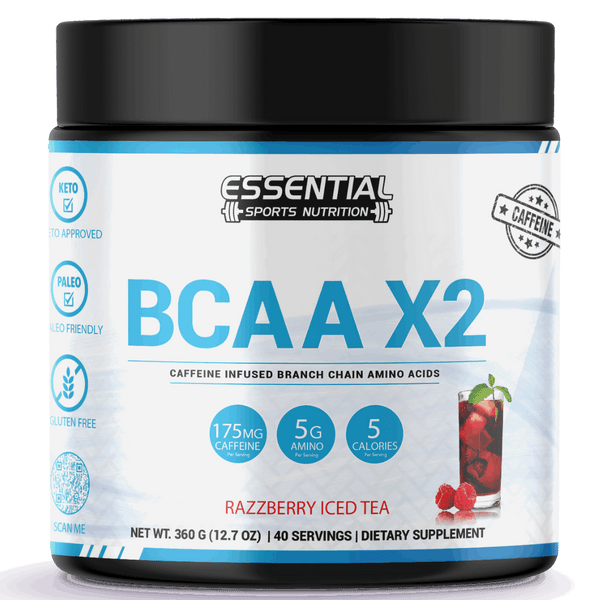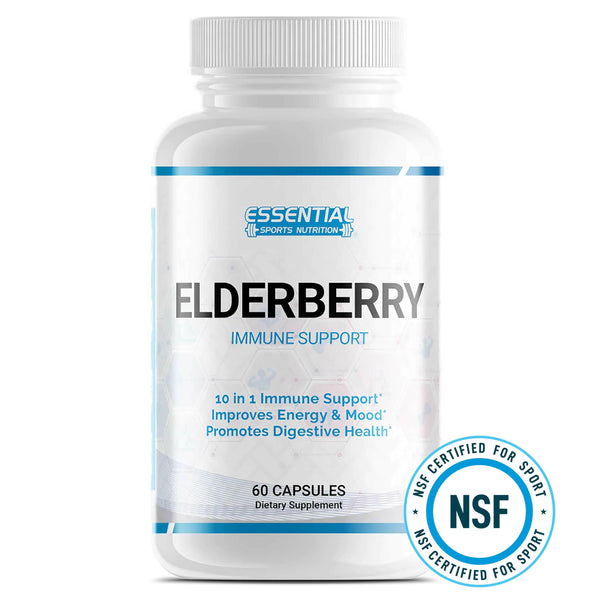Cardio Exercise: Effective Workouts for a Healthy Heart
You might think cardio is monotonous, but it's a diverse and adaptable component of any fitness regime. When you lace up your shoes for a run, clip into a bike, or hit the pool for some laps, you're not just burning calories; you're embarking on a journey to enhance your heart health, stamina, and mental well-being.
Cardiovascular exercise, often simplified to 'cardio,' encompasses any activity that increases your heart rate, and before you dismiss it as too simple or too demanding, consider the array of options and levels of intensity it includes.
Whether you're a seasoned athlete or a beginner, understanding the mechanics and benefits of cardio can transform the way you view this essential aspect of your workout routine. Stay with me as I unpack the myths, reveal the facts, and guide you through the nuances of maximizing the effectiveness of your cardio sessions.
Understanding Cardiovascular Exercise

Cardiovascular exercise, often referred to simply as cardio, effectively elevates your heart rate within a target zone, optimizing the performance of your heart and lungs. This form of physical activity relies on the body's ability to use oxygen efficiently during exertion, which in turn enhances cardiovascular capacity and endurance.
Engaging in cardio workouts such as walking, cycling, and swimming can significantly improve your cardiovascular health. These activities stimulate your cardiovascular system by engaging large muscle groups, which helps to raise your heart rate and maintain it within a beneficial range. This process is central to what's known as Heart Rate Training, a method designed to maximize the benefits of cardio through systematic control of exercise intensity.
Regular aerobic exercise helps in conditioning your heart and lungs, contributing to an array of health benefits. However, genetics, sex, and age play crucial roles in individual cardio capacity, influencing how your body responds to and reaps the advantages of these exercises. It's recommended that you engage in a certain amount of exercise per week, typically around 150 minutes of moderate aerobic activity, to maintain optimal cardiovascular health. By understanding these factors, you can tailor your cardio regimen to better suit your unique physiological profile.
Key Benefits of Cardio

Burning fat and calories through cardio not only assists in weight management but also brings numerous systemic health benefits, including improved cardiac function and reduced disease risk. Incorporating cardio exercises into your routine raises your heart rate, which is essential for boosting cardiovascular health. You'll find that regular cardio enhances your overall physical and mental health in more ways than one.
Consider these key benefits of adding cardio to your exercise routine:
-
Enhanced Heart Efficiency: Cardiovascular fitness is paramount for a healthy heart. Regular cardio strengthens your heart muscle, leading to improved blood circulation and lower blood pressure.
-
Disease Prevention: Engaging in cardio reduces your risk of developing chronic diseases. By maintaining a healthy weight and managing blood glucose levels, you're less likely to encounter type 2 diabetes and certain cancers.
-
Mental Health Boost: Cardio doesn't just benefit your physical health; it also has a profound impact on your mental well-being. Exercise releases endorphins, which act as natural stress fighters, enhancing your mood and cognitive function.
-
Longevity of Life: The cumulative benefits of cardiovascular fitness contribute to a longer, healthier life. A heart that's regularly challenged is more robust and resilient against age-related decline and disease.
Selecting the Right Cardio Activities

Recognizing the myriad benefits of cardio for your health, it's crucial to select activities that align with your preferences and lifestyle to ensure you remain committed and consistent. When crafting your exercise program, opt for a type of exercise that gets you excited and matches your fitness level.
Here's a guide to help you maintain perspective on the variety of cardio options available:
| Environment | Activity | Benefits |
|---|---|---|
| Outdoor | Running | Fresh air, scenery, variable terrain |
| Gym | Elliptical Trainer | Low-impact, full-body workout |
| Home | Jumping Rope | Convenient, high-intensity |
All these activities qualify as cardio and can constitute a robust cardiovascular workout. Analyze your routine to determine which options are most feasible for you. Are you more likely to stick with an exercise that fits into your home life, or do you thrive in the shared energy of a gym environment? Selecting the right cardio activities isn't just about the exercise itself; it's about finding a sustainable practice that can evolve with your physical and motivational needs. Experimentation is key; only through trial and error will you discover the cardio rhythm that resonates with you.
Optimal Cardio Workout Durations

Understanding the optimal duration of cardio workouts is crucial, as it can significantly influence the efficiency and effectiveness of your cardiovascular training. The American Heart Association suggests that you aim for at least 150 minutes of moderate-intensity exercise per week to reap profound health benefits. Here's how you can tailor your training program to optimize the time you spend strengthening your cardiovascular system:
-
Start Smart: Beginners should ease into physical activity with 10-15 minute sessions, then incrementally increase by 5 minutes as your endurance builds.
-
Consistency is Key: Strive for regular 30-minute workouts at moderate intensity to maintain a healthy heart rate and support your cardiovascular health.
-
Progress and Persistence: Gradually work towards longer sessions of 30-60 minutes for enhanced calorie burn and cardiovascular endurance.
-
Balance for Benefits: Mix frequency with optimal cardio workout durations, focusing on steady progression to avoid overtraining and enjoy maximum health benefits.
Cardio Exercise Intensity Levels
To maximize the effectiveness of your cardio workouts, it's essential to adjust the intensity level to align with your fitness goals and current physical condition. Understanding the exercise intensity levels helps you craft a routine that can increase your heart rate appropriately over some time, ensuring both safety and progress.
Each type of cardio, from Low-Impact Cardio to high-intensity interval training, has its place in a well-rounded regimen. For example, if you're starting or looking for a recovery day, low-intensity activities that moderately increase your heart rate, like walking or easy cycling, are suitable. As your fitness improves, you might incorporate moderate-intensity exercises, which should feel somewhat hard and cause you to sweat, like swimming laps or brisk walking.
For those seeking a form of cardio that challenges endurance and strength, high-intensity exercise is key. This vigorous level of activity includes running or intense cycling, pushing your heart rate into the higher zones. Remember, monitoring your heart rate is crucial, aiming for specific percentages of your maximum heart rate to maintain the desired intensity.
| Intensity Level | Type of Cardio | Heart Rate Zone |
|---|---|---|
| Low | Leisurely walk | 50-60% MHR |
| Moderate | Swimming laps | 60-70% MHR |
| High | Running | 70-85% MHR |
Cardio Training FAQs:
Q: What are the best cardio exercises?
A: The best cardio exercises include running, cycling, swimming, jump rope, rowing, and high-intensity interval training (HIIT).
Q: What type of cardio exercises can be done at home?
A: You can do cardio exercises at home using exercises like jumping jacks, running in place, burpees, jump rope, or using a stationary bike or treadmill if you have one.
Q: How long should I do cardio exercises?
A: It is recommended to do at least 150 minutes of moderate-intensity cardio exercise per week, 75 minutes of vigorous-intensity exercise, or a combination of both.
Q: What are some examples of cardio exercises that can be done at home?
A: Some examples of cardio exercises that can be done at home include jumping jacks, burpees, high knees, jump squats, and mountain climbers.
Q: What is the best way to do cardio exercise at home?
A: You can do cardio exercises at home by following online workouts, using exercise equipment like jump ropes, or engaging in activities like dancing or brisk walking around your house.
Q: Is strength training a form of cardio exercise?
A: While strength training can help increase your heart rate and improve cardiovascular health, it is not considered a traditional form of cardio exercise. It is beneficial to incorporate both strength training and cardio into your fitness routine.
Q: How does cardio exercise help the heart?
A: Regular cardio exercise helps improve cardiovascular health by increasing blood flow, strengthening the heart muscle, reducing the risk of heart disease, and improving overall heart function.
Q: What counts as cardio exercise?
A: Any physical activity that gets your heart rate up and increases your breathing, such as brisk walking, running, cycling, swimming, or engaging in high-intensity interval training (HIIT) workouts, can be considered cardio exercise.
Q: What is the best way to increase heart rate during cardio workouts?
A: You can increase your heart rate during cardio workouts by engaging in activities like running, cycling, swimming, jumping rope, or performing high-intensity interval training (HIIT) exercises.
Q: How can I determine my target heart rate for effective cardio workouts?
A: You can determine your target heart rate for effective cardio workouts by using the formula: 220 - your age = maximum heart rate. Then, aim to exercise at 50-85% of your maximum heart rate, depending on the intensity of your workout.
Other Frequently Asked Questions:
What Is Considered Cardio Exercise?
You're likely part of the 56% of adults striving to meet weekly aerobic activity goals. Any exercise that raises your heart rate into a target zone, sustained for a period, qualifies as cardio. Precision in your regimen, whether it's brisk walking or intense interval training, hinges on understanding your body's oxygen usage. Analyzing how variables like genetics affect your performance can fine-tune your approach, maximizing benefits such as weight loss and increased endurance.
How Do You Explain Cardio?
You might describe cardio as a workout that increases your heart rate, enhancing your heart and lung efficiency. It's not just about running; it involves any activity that gets your blood pumping, from brisk walking to biking. Regularly engaging in cardio boosts your stamina and can help fend off heart-related issues. Remember, your body's reaction to these exercises varies based on genetics and other personal factors.
What Does Cardio Do the Body?
Cardio turns your body into a finely tuned engine, burning calories and bolstering heart health. You'll strengthen your cardiovascular system, improve endurance, and increase lung capacity. As you engage in activities like running or swimming, you're also boosting your metabolism, which can aid in weight loss. Remember, your unique physiology dictates how you adapt, so tailor your cardio regimen to your own needs for optimal results.
What Does Cardio Mean Example?
You're asking for examples of cardio, which typically means activities like jogging, biking, or swimming. These exercises get your blood pumping and work out major muscle groups, challenging your heart and lungs. They're not just random workouts; they're designed to increase your stamina and improve cardiovascular health. So, when you lace up for a run or dive into the pool, you're doing more than moving—you're kickstarting a whole-body health boost.
Exercise Options
In wrapping up, think of your cardio routine as a well-oiled machine, functioning seamlessly when tuned correctly. You've learned the pivotal role it plays in fortifying your heart and lungs, alongside the joy of choosing a regimen that resonates with you. Aim for balanced durations and varied intensity levels to keep your body guessing and improving. Analyze your progress, fine-tune as necessary, and remember, that consistent cardio is the heartbeat of a robust fitness journey.




























